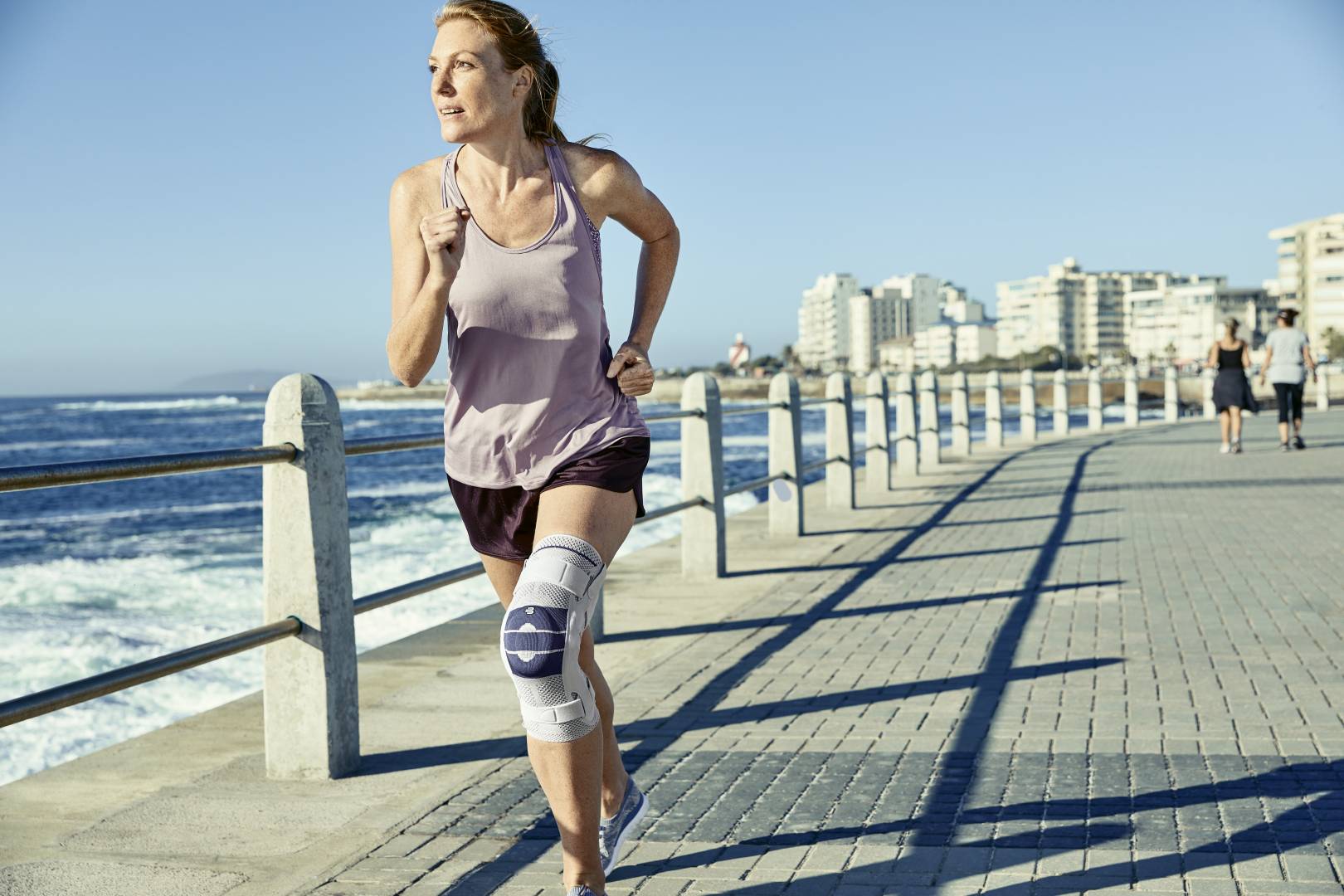
Our athletic therapists offer on-field and clinical assistance to a wide variety of athletes for common sports injuries.
Osteoarthritis (OA) is a degenerative joint disease characterized by the breakdown and eventual loss of the cartilage between bones, leading to pain, stiffness, and reduced mobility. A common condition affecting millions of people worldwide, it is a progressive disease that can lead to significant disability if left untreated. The knee is one of the most common joints affected by OA and, without treatment and management, can cause severe mobility issues as well as a decline in day-to-day quality of life.
Understanding Knee Osteoarthritis
Knee OA is the breakdown and eventual loss of the cartilage in the knee joint. This degeneration leads to symptoms like pain, stiffness, and swelling, which can become more severe as the disease progresses. It’s important to distinguish between general knee pain and the symptoms of OA. While general knee pain might be due to a temporary strain or injury, pain from OA is usually more chronic and worsens over time.
The baseline stage of knee health is where the knee joint is healthy. There’s no noticeable wear or tear on the cartilage, no inflammation, and no pain. The bones in the joint are intact, and there’s sufficient space between them to allow for fluid, easy movement.
But Knee OA has four progressive stages:
Stage 1 – Minor
At this stage, there may be slight wear on the cartilage, and tiny osteophytes or bone spurs may begin to form. However, there is likely no significant discomfort or impairment, and the space between the bones is still normal. Most people are unaware they even have OA during this stage as symptoms are typically non-existent or very mild.
Stage 2 – Mild
As OA progresses to stage 2, the wear on the cartilage becomes more noticeable, and osteophytes grow larger. Despite these changes, the space between the bones remains normal. Symptoms at this stage may include stiffness or tenderness after a long day of walking, standing, or when you first get up in the morning. There might also be a crunchy sound or sensation (crepitus) during joint movement.
Stage 3 – Moderate
At stage 3, the cartilage damage is more extensive, and the gap between the bones may start to narrow. The larger osteophytes can make the joint appear larger or more deformed. Pain and stiffness may become more frequent and intense, particularly after exercise or prolonged periods of inactivity. Some people may start to experience difficulty in performing daily activities such as climbing stairs or walking long distances.
Stage 4 – Severe
This is the most severe stage of OA. The cartilage is almost completely gone, leading to a “bone-on-bone” situation where the protective cushioning is lost. The space between the bones is significantly reduced, causing the bones to rub against each other. This can result in severe pain, inflammation, and swelling. Mobility may be severely limited, and performing daily activities could become extremely challenging.
These stages provide a general guideline, but OA can progress differently for everyone. Some people might experience rapid progression, while others may stay in the early stages for years. It’s crucial to consult with a healthcare provider if you’re experiencing persistent knee pain or difficulty with movement. They can provide an accurate diagnosis and appropriate treatment options to help manage your symptoms and slow the progression of the disease.
Knee Braces that Manage Knee Osteoarthritis
Kinemedics has a range of products that help you manage Knee OA and regain a better quality of life. A key management technique is the use of knee braces, especially the GenuTrain series of products. These progressive brace options enable the management of Knee OA regardless of the stage you may be experiencing and its pace of progression.
The three key braces include:
GenuTrain
The GenuTrain is the first line of defense for treating light to moderate cases of OA. It combines Bauerfeind® flat knit technology with 20-30mmHg compression, making it suitable for people in the early stages of OA. The adapted omega pad provides a massaging effect on the Hoffa pads and meniscus, which can help reduce pain and inflammation. You can explore GenuTrain here or buy it here.

GenuTrain S
For those experiencing moderate to severe OA, the Genutrain S is an excellent option. It’s built on the Genutrain design but includes two semi-rigid stays on each side for added stability. The four additional straps provide extra support, making it ideal for managing more advanced cases of OA. You can explore GenuTrain S here or buy it here.

GenuTrain OA
The Genutrain OA is a knit offloader designed specifically for OA treatment. Its simplified design includes a single BOA dial system, allowing patients to adjust their own tension for maximum comfort. This brace is ideal for advanced cases of OA that predominantly affect the medial or lateral compartments of the knee. You can explore GenuTrain OA here and get a custom fit by speaking to our healthcare team here.

Addressing Knee OA With the Right Support
Knee Osteoarthritis can significantly impact your quality of life, affecting mobility, independence, and overall well being. It’s important to remember that OA isn’t a static condition—it progresses over time. Early detection and appropriate management can slow the progression, alleviate symptoms, and maintain or even improve quality of life.
Finding the right products for managing Knee OA can make a world of difference. This could include assistive devices like braces or shoe inserts that help distribute weight more evenly across the joint, reducing pain and making movement easier. Physical therapy equipment can also be beneficial, helping you strengthen the muscles around the knee and increase flexibility. Pain relief products, whether topical creams, gels, or oral medications, can also play a vital role in managing day-to-day discomfort.
However, these products are not one-size-fits-all solutions.
What works best for one person might not work as well for another. This is where the importance of the right provider comes into play. A good provider will not only offer a wide range of high-quality products but will also have the knowledge and expertise to guide you towards the most suitable options for your specific needs. They should take the time to understand your symptoms, lifestyle, and personal preferences, and work with you to develop a tailored management plan.
In addition, the right provider should offer ongoing support. Managing Knee OA is a long-term commitment, and your needs may change over time as the condition progresses. A good provider will be there to reassess your situation, adjust your management plan, and introduce new products as necessary.
Ultimately, while Knee OA is a chronic, progressive condition, it doesn’t have to mean the end of mobility or a fulfilling life. With the right products and the right provider, you can effectively manage your symptoms, slow disease progression, and maintain your independence. It’s about taking control of your health and making the choices that allow you to live life on your terms.